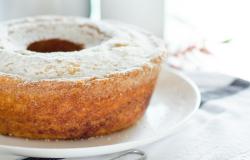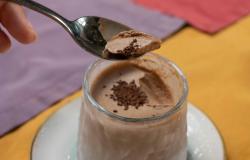Krapfen (Hole Doughnuts)

Carnival, the period running from the end of Christmas to the beginning of Lent, continues to be observed in Italy. A Catholic festival with pagan origins, this period of Church-permitted revelry and garagantuan feasting once represented a precious last opportunity for the mostly peasant population to exhaust the larder before the food shortage imposed by the passage from winter to spring. Luckily, food shortages are a much rarer event in the country now. Italians, however, still prepare and eat a litany of deep-fried pastry and dough-based sweets to mark the occasion.
One of the treats you're likely to find in the country's pasticcerie during this time bears the rather un-Italian-sounding name of krapfen, a jam-filled, hole doughnut thought to have been invented in the Austrian city of Graz in the 1600s. Like the fricitilia the Romans once made for Saturnalia, these pillowy, sugar-coated morsels were also fried and sold on the streets as part the city's Carnival celebrations.
How did an Austrian specialty also come to be part of the Italian culinary canon? The answer is simple. Much of the country's north – present-day Lombardy, Trentino- Alto Adige, Veneto and Friuli-Venezia-Giulia - were once ruled by the Austro-Hungarian empire. Today, these decadent deep-fried sweets are still known as krapfen in this part of the country. For a brief period in the mid-1700s, Hapsburg territory reached as far south as Naples too. Since then, similar, ring doughnuts called graffe have become the city's defining Carnival sweet. Elsewhere in Italy, such as Tuscany, you'll also find almost identical hole doughnuts, generally filled with crema pasticcera (Italian pastry cream), known as bomboloni.
The directions in the recipe below, adapted from Pellegrino Artusi's Science in the Kitchen and the Art of Eating Well, are given for preparing the buttery dough by hand. Kneading can also be done though in a food processor fitted with a dough hook. As for the filling, apricot jam is the most traditional, but you may wish to inject another variety of jam or even crema pasticcera instead. When serving, keep in mind that krapfen are very rich. They simply will not sit comfortably in your stomach after a big meal as a dessert. Accompany these yeasted delights with your morning cappuccino for a typically sweet Italian breakfast and you won't be disappointed!
Ingredients (makes about 10 krapfen)

Pour tepid milk into a jug and add active dried yeast and sugar. Stir and leave to sit until the yeast has dissolve completely and foam rises to the surface (about 10 minutes). Add strong bread flour and salt to a large bowl and create a well in the centre. Add the milk containing the dissolved yeast and sugar, the lightly-beaten eggs and the melted butter at room temperature. Beat with a fork in the centre and move out until all the dry ingredients are incorporated. Dust hands lightly with some flour and transfer the mixture to a lightly-dusted work surface. Knead until forming a smooth and elastic ball of dough that no longer adheres to your hands and work surface (10 – 15 minutes). Put dough in a bowl, cover with a damp teatowel or plastic wrap and leave to rise in a warm place away from draughts until doubled in size (about 1-2 hours).
Deflate dough and roll it into a thick snake with a 3 cm diameter. Divide dough into 10 pieces weighing about 40 g each. Roll and shape into balls. Transfer to a large lined baking dish ensuring that the balls are not too close to each other. With a drinking glass, flatten the balls into discs about 1-1.5 cm thick. Leave to prove in warm place for 30-40 minutes.
Heat vegetable oil to 170 degrees in a saucepan large enough for the krapfen to float. Carefully lower the risen discs into the hot oil. Fry on each side until golden brown. Remove with a slotted spoon and transfer to a dish lined with paper towels. Transfer krapfen to a bowl containing caster sugar while still hot, turning them over carefully so they are evenly coated. Enjoy while still warm, perhaps with your morning cappuccino.
Leave to cool completely if wishing to fill your krapfen with some crema pasticcera (Italian pastry cream) or jam. Using the tip of a piping bag, make a small hole at the top of the krapfen and inject a small amount of crema or jam inside





